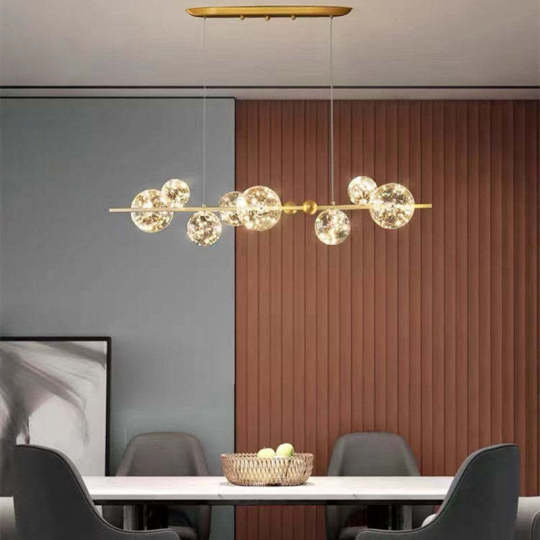Unlock the Secrets of Stunning Chandeliers: Elevate Your Space with Style and Elegance!
Chandeliers have long been synonymous with elegance and grandeur, gracing the ceilings of palaces, grand ballrooms, and modern homes alike. Dating back to medieval times, these ornate light fixtures were originally designed to hold candles, illuminating dark spaces while serving as a status symbol. Today, chandeliers continue to play a pivotal role in interior design, offering a unique blend of functionality and artistic expression. Whether you’re looking to add a touch of glam to your dining room or create a cozy atmosphere in your living space, chandeliers can dramatically enhance the overall aesthetic of any room. In this article, we will explore the different types and styles of chandeliers available, delve into the materials they are made from, and provide practical tips for choosing the perfect chandelier for your home.

Understanding Chandeliers: Types and Styles
When it comes to chandeliers, the variety is vast, offering something for every taste and style. Traditional chandeliers typically feature intricate designs with ornamental details, often made from crystal or glass. These are perfect for adding a timeless elegance to formal dining rooms or grand entryways. On the other hand, modern chandeliers embrace minimalism and clean lines, often using materials like metal and glass to create a sleek appearance. Rustic chandeliers, which often incorporate natural materials such as wood and wrought iron, bring a warm, inviting feel to spaces like country homes or cabins. Crystal chandeliers, known for their dazzling sparkle and light-reflecting qualities, can transform a simple room into a luxurious haven, making them a popular choice for living areas and banquet halls. Each type of chandelier offers unique characteristics that can significantly influence the ambiance of a space.
Materials Used in Chandeliers
The materials used in chandelier construction play a crucial role in determining their overall look and feel. Glass chandeliers, for instance, offer a delicate, refined aesthetic and come in various styles, from frosted to clear, allowing for versatile designs. Metal chandeliers, often made from brass, bronze, or stainless steel, lend a contemporary edge and are known for their durability. Crystal chandeliers, while visually striking, can be quite heavy and require sturdy installation. They are often adorned with prisms that catch and reflect light beautifully, creating a stunning visual effect. Lastly, wooden chandeliers, which are less common, can add a rustic charm to a room, making them suitable for casual settings. However, wood may require more maintenance compared to other materials. Understanding these materials can help you choose a chandelier that not only matches your style but also meets practical needs.
Choosing the Right Chandelier for Your Space
Selecting the perfect chandelier involves more than just choosing a beautiful design; it requires careful consideration of your space. First, assess the size of the room and the height of the ceiling. A general rule of thumb is that the chandelier should be approximately one-third the width of the table it will hang above, creating a balanced look. Additionally, if your ceilings are particularly high, consider a larger chandelier or one with cascading elements to draw the eye upward and create a sense of grandeur. It's also essential to think about the existing decor of your space. A modern chandelier may clash with traditional furnishings, while a vintage piece could feel out of place in a contemporary setting. Strive for a harmonious blend where the chandelier complements the overall design theme while serving as a stunning focal point.
Placement Ideas and Tips
Placement plays a vital role in enhancing the visual impact of a chandelier. In dining rooms, a chandelier should be hung about 30 to 36 inches above the table to provide adequate light without obstructing views. In living rooms, consider positioning the chandelier in the center of the room, ensuring it’s not too low or too high, creating a focal point that draws attention. For entryways, a chandelier can make a bold first impression, so opt for a design that reflects your style and sets the tone for the rest of your home. When it comes to bedrooms, a smaller chandelier hung above the bed can create a cozy and romantic atmosphere. As a personal anecdote, a friend's decision to place a vintage crystal chandelier in their entryway transformed the entire feel of their home, welcoming guests with an air of sophistication. Remember, the key to placement is ensuring the chandelier is not only aesthetically pleasing but also functional, providing the right amount of light for the space.
Choosing the Perfect Chandelier for Your Home
Chandeliers are more than just light fixtures; they are statement pieces that can transform your living spaces with style and elegance. By understanding the various types, styles, and materials available, as well as considering practical placement tips, you can choose the perfect chandelier that reflects your personality and enhances your home decor. Whether you opt for a traditional crystal chandelier or a modern metal design, the right choice can elevate your space, making it a warm and inviting haven for family and friends. So, take the plunge into the world of chandeliers and let your home shine!






Comments